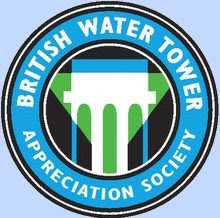update 2/9/2011: visit now fully booked
Lord Iveagh has kindly granted permission for BWTAS to visit the Elveden Water Tower, a Grade II listed structure from 1895 and one of the most ornate and imposing examples of a Victorian estate tower in the UK.
Wednesday 12th October, 11.00am. Meet at the Estate Offices, London Rd, Elveden, Thetford IP24 3TQ.
Wednesday 12th October, 11.00am. Meet at the Estate Offices, London Rd, Elveden, Thetford IP24 3TQ.
Anyone planning to attend MUST let Wil Harvey know before on 01502 478248 or harveys@care4free.net ASAP, as the estate must have names beforehand. There will be no admission otherwise.
Booking priority is given to BWTAS members, then to the public. Space is very limited. We'll announce any changes and further information here and on twitter @bwtas. Non-members can join the society on the day.
Please note all the usual disclaimers apply: this is a industrial building not normally open to the public, it is not suitable for young children, there is no disabled access and the visit is at the visitor's own risk and subject to the directions of the Elveden estate.
For companions not interested in water towers, there is a shop and restaurant on the estate www.elveden.com
Booking priority is given to BWTAS members, then to the public. Space is very limited. We'll announce any changes and further information here and on twitter @bwtas. Non-members can join the society on the day.
Please note all the usual disclaimers apply: this is a industrial building not normally open to the public, it is not suitable for young children, there is no disabled access and the visit is at the visitor's own risk and subject to the directions of the Elveden estate.
For companions not interested in water towers, there is a shop and restaurant on the estate www.elveden.com


